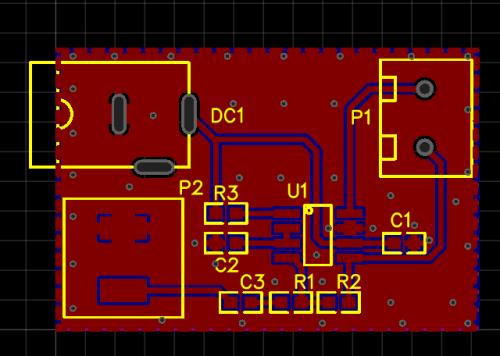Before explaining the layout rules of the digital-analog hybrid PCB design, we now distinguish the interference sources, sensitive circuits and interference paths on the terminal board. Understanding these interference sources and sensitive circuits can help us correctly formulate the layout and wiring plan. In addition, the interference path The understanding is crucial.

1. PCB simulation circuit
For end products, analog circuits include all radio frequency circuits, radio frequency power supplies, radio frequency control circuits, digital-to-analog conversion circuits, and audio circuits. All of the above analog circuits are sensitive circuits. Among them, sensitive circuits that need special attention include frequency termination circuits (including local oscillator signals, frequency synthesis circuit power and control signals), receiving front-end circuits, and audio circuits.
2. PCB interference source
Interference sources include all digital circuits, high-power radio frequency circuits (power amplifiers, antennas and other high-power radio frequency circuits). Among them, the interference sources that need special attention include clock circuits, switching power supplies, high-current power lines, power amplifier circuits, and antenna circuits. The interference of radio frequency signals such as power amplifiers and antennas is analyzed in the radio frequency PCB design part of this specification.
3. Interference path
The interference paths that need to be paid attention to for digital-analog hybrid design include: space radiation, power ground (plane or wiring), digital-to-analog conversion circuits, and various control signals of analog circuits.
(1) Space radiation: The circuits that are close to each other will generate crosstalk through radiation. This is the same concept as digital signal crosstalk, but it should be noted that the crosstalk that analog signals can tolerate is much smaller than that of digital signals, so there is It is necessary to control crosstalk at the layout stage. The way to reduce the space radiation is generally to extend the distance of the layout and use the shielding box.
(2) Power ground: The power ground is a common loop between digital and analog circuits, so interference signals may be conducted to sensitive circuits through the power ground conductor. The way to control the crosstalk of the power supply ground is to use filter components and power supply ground division reasonably.
(3) Digital-to-analog conversion circuit: It is an interface between analog and digital signals. If the layout or wiring is handled improperly, such as the unclear layout of digital and analog circuits and the interlaced wiring, it may cause crosstalk.
(4) Analog control signal: The ideal analog device should be that the control signal and the analog circuit are isolated inside the device, and the control signal only needs to ensure the correct logic level. However, the device often fails to do this, and the interference number on the control signal may be directly coupled to the analog circuit. The solution is to minimize the interference of the analog circuit control signal and use filter components reasonably.
Third, the layout rules of digital-analog hybrid PCB design
Rule 1: Analog devices are placed in the analog area.
Rule 2: Digital devices are laid out in the digital area.
Rule 3: The digital-analog hybrid chip is treated as an analog device and placed in the analog area, but the digital interface needs to be placed close to the corresponding digital device.
Rule 4: Use shielding boxes to protect the following circuits as much as possible
1. The receiving front-end circuit, including the filter, LNA, impedance matching circuit, etc. between the antenna and the receiving chip.
2. Frequency source circuit: VCO, phase locked loop chip, loop filter, crystal oscillator and other circuits.
3. Power amplifier circuit. In the layout, as far as possible, different circuits have independent power supply paths
Rule 5: Place the filter capacitor before the power supply enters the analog area
Rule 6: Digital power and analog power supply power from different directions.
Rule 7: The power supply path in the same direction uses the path from large signal to small signal for power supply.
The large-to-small power supply path can reduce the interference of large-signal circuits on small-signal circuits.
Rule 8: The power line of the power amplifier should be as short as possible to reduce the line voltage drop.
Earlier mobile phone battery connectors are generally designed in the middle of the mobile phone board. The upper part is the radio frequency circuit, and the lower part is the digital circuit, as shown in the figure:
The advantage of this layout is that the RF and digital power supply paths are independent, and the power supply path for the attack and amplifier is short.
Rule 9: During the layout and wiring of power modules, reserve copper area for heat dissipation according to power consumption.
Rule 10: Layout is to reserve space for ground vias for important pins.
The ground pin of the radio frequency device needs to be grounded nearby and connected to the reference layer of the radio frequency signal. For example, if the second layer is hollowed out, the ground pin must be connected to the third layer nearby.
Rule 11: The filter capacitor is close to the pin of the power module, and the high-frequency filter capacitor is closer to the pin.